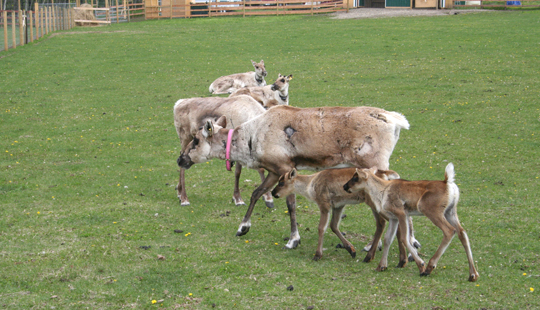Protecting Habitat
Our operational plans contain conservation measures to protect habitat for species of management concern (which include species at risk as well as those of high concern to the public such as moose, marten, and mule deer), and we monitor general trends in habitat types, elements and patterns.
Canfor has identified nine species occurring in our operating areas that are red-listed by the International Union for Conservation of Nature and which may also be impacted by forestry –suckley cuckoo bumblebee, whitebark pine, rusty blackbird, western bumblebee, mountain lady’s slipper, sparrow’s egg lady’s slipper, western toad, olive-sided flycatcher and western white pine. The suckley cuckoo bumblebee is classified as critically endangered.
There are 22 species listed under Canada’s Species at Risk Act occurring within our operating areas and that may be impacted by forestry, including the western screech owl, Williamson’s sapsucker, American badger, whitebark pine and Rocky Mountain tailed frog. We use special management practices and monitoring to meet the habitat requirements of species at risk in our operating areas.
In 2015, we conducted aerial and ground assessments to determine the habitat suitability of two connectivity corridors for mountain caribou in our operating areas in the Prince George region. This helped us identify recruitment stands for the corridors, determine access control points for both people and predators, and identify the best timing for harvest activities to minimize any impact on the caribou herds. The ground verification by a registered professional biologist and our staff identified important habitat values such as lichen forage, natural openings and tree age and species composition. The aerial assessment was to ensure that connectivity of the forested area spanned the corridors, and that harvesting would not compromise any of the values.
In northeastern BC, our staff helped a research team investigating the importance of nutrition in the survival of caribou. The final field research trials, held in 2015 in the Fort St. John, Fort Nelson and Chetwynd areas, used tame caribou to quantify food selection behaviours and food intake. The project will enhance understanding of the summer/autumn forages utilized by caribou and of the nutritional value and limitations of different plant communities available to caribou in the boreal and montane ecosystems of northeastern BC.

Tame caribou used in a nutrition study at a holding facility constructed by Canfor logging contractor W&M Enterprises.
Canfor staff and contractors are trained on identification of species at risk and species of management concern. When one of these species is spotted, it is reported to the appropriate person, and management actions are taken. A new identification field guide for species at risk was developed for the East Kootenay region, which will be rolled out to staff and contractors in 2016.
Canfor north division staff continue to work with the local oil and gas industry to coordinate access management and reduce impacts on habitat. In many instances, Canfor and oil and gas companies are able to use each other’s roads to minimize the need for new construction. We recently implemented a road rehabilitation policy that sets out restoration activities on roads no longer needed as a result of oil and gas development within our cutblocks.
Our staff are working with oil and gas contractors in northeastern BC to identify the resources and habitat elements protected by Wildlife Tree Patches established as a result of our harvest activities. By sharing this information, we can effect protection of Wildlife Tree Patches during the development of oil and gas facilities.